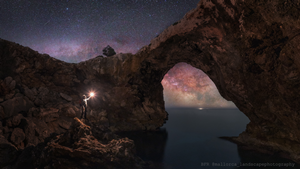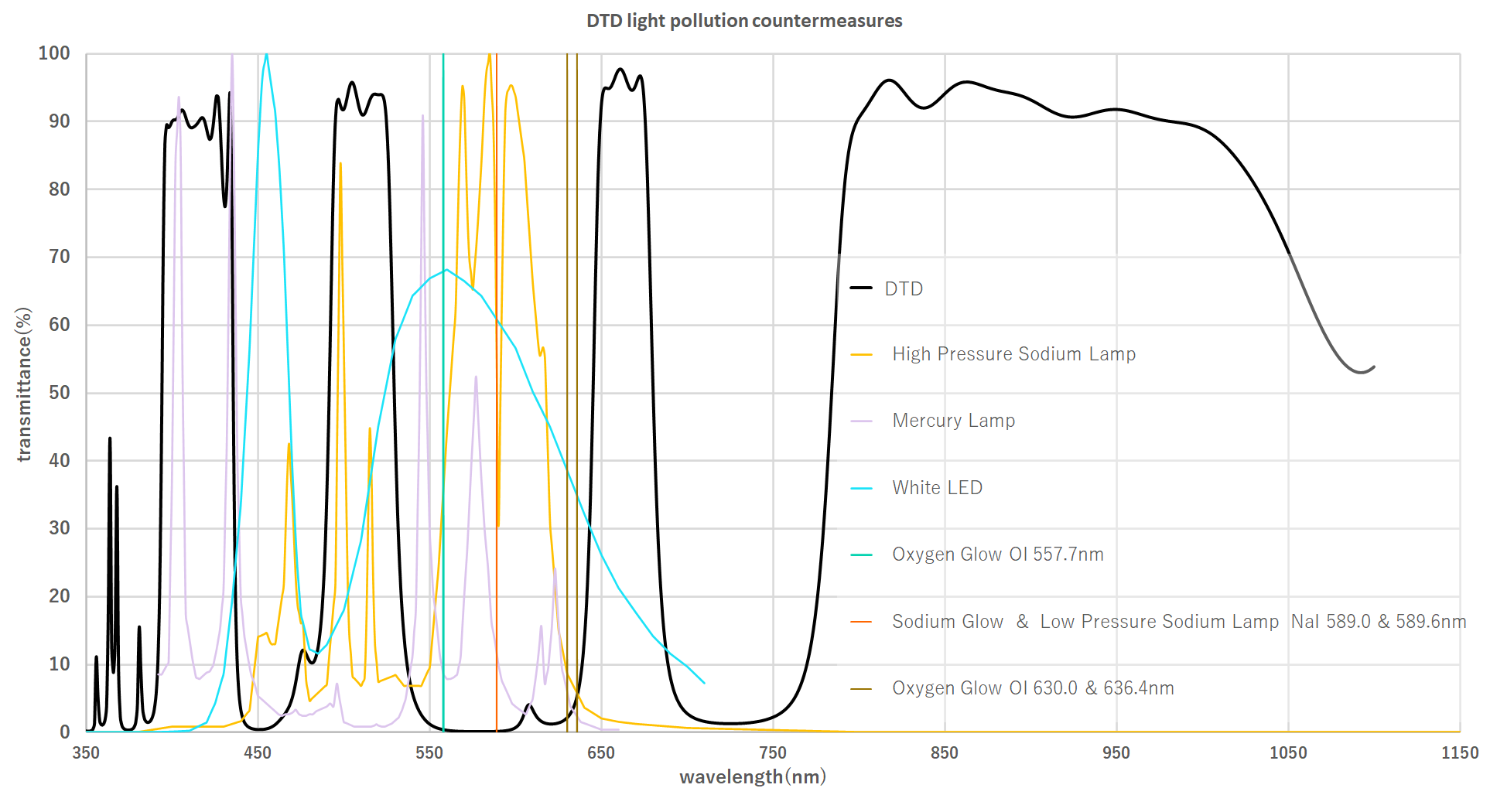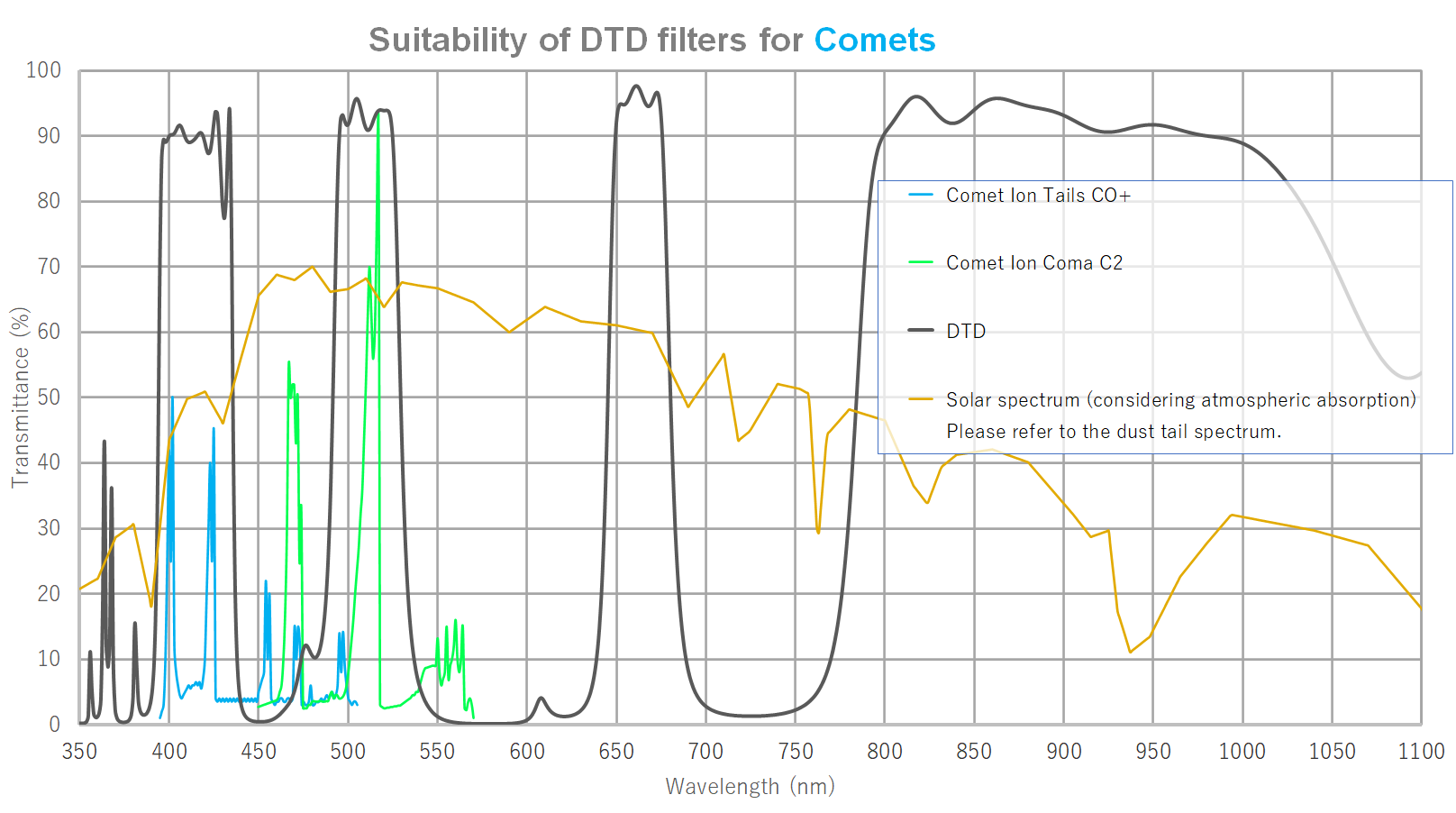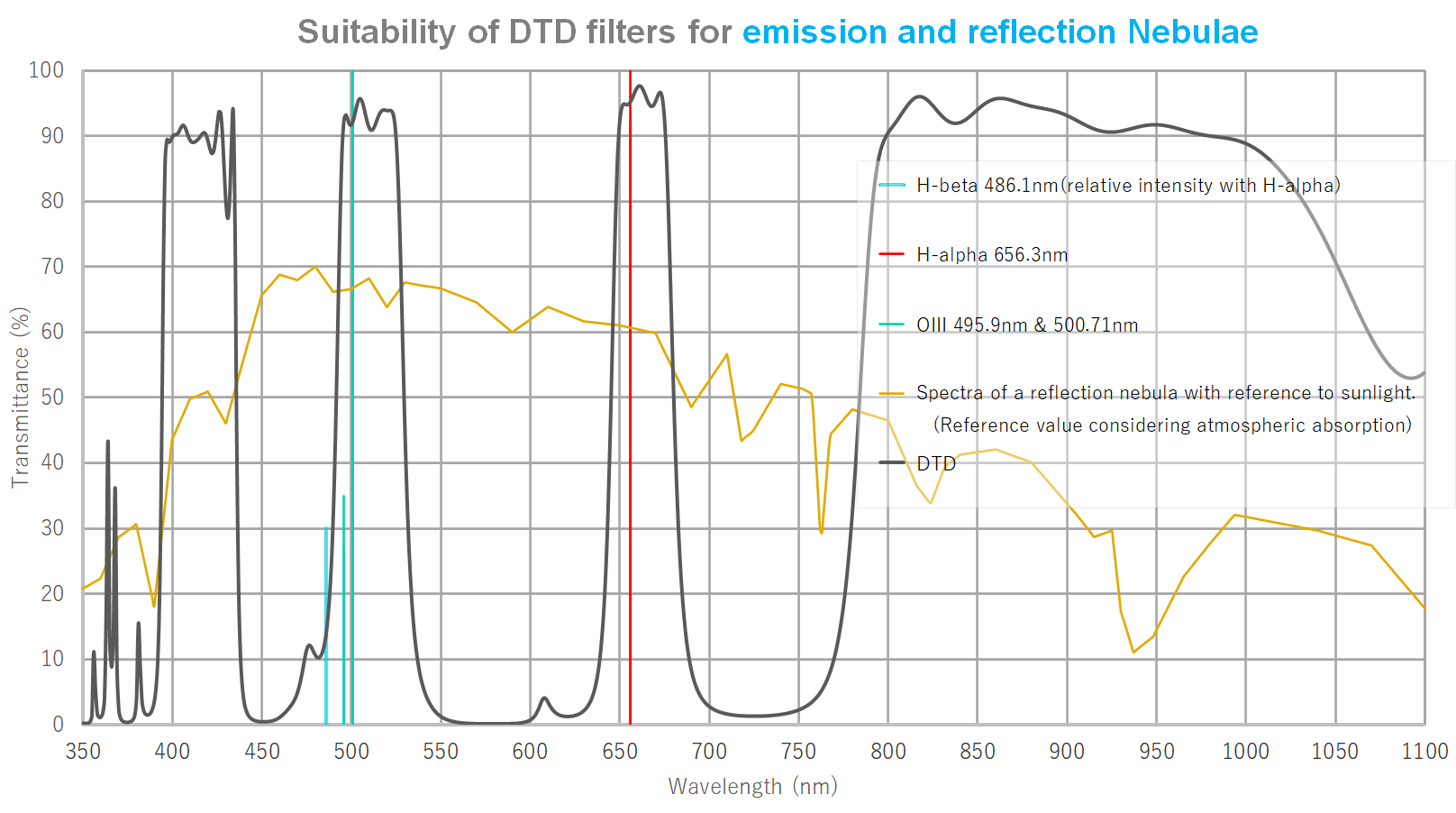Feature:
The IDAS DTD filter not only passes through the Ha and OIII regions in the same manner as of the IDAS NBZ, but also provides a pass band for comet ion tails in the visible spectrum range (400nm to 700nm, susceptible to light pollutions). This filter furthermore enhances the contrast of the continuous spectrum lights from comet dust tails, galaxies and the Milky Way by making use of the NIR region that is hardly interferenced by light pollutions. The DTD filter makes it possible to shoot more objects in the visible to NIR spectrum range at higher contrasts.
n.b. on halos:
Optical filters such as IDAS DTD and GNB utilizing infrared tend to cause haloing in the NUV and NIR regions. This is because the anti-reflection properties of off-the-shelf cameras' optical systems (oiptical window and sensor cover glass) are optimized for the visible spectrum only, not for the NIR region. Thus, haoling at the camera end in the unoptimized region becomes more apparent, coupled with haloing from the filter itself.
Here is a rough estimation of the magnitude of haoling where the haloing maginute of NBZ (NBZex) is counted as 1:
DTD + IMX294 sensor results in 7.9 times
DTD + IMX585 sensor results in 23.7 times
DTD Review on Youtube:
Astroblender:
https://youtu.be/skwYM1WuGnA?si=ytOr2Rfk4yo-VtOO
Star Walking:
https://youtu.be/-u5VmCL3AA8?si=_ssBdhpmaNKUH9V2
Landscape Astrophotography:
These days more and more people make use of IDAS DRE/DRT filters for landscape astrophotography. Here are the links to valuable reference sources to learn about landscape astrophoto graphy - provided by courtesies of Mr. Bernat Font.
- https://bernatfont.wixsite.com/mallorca-landscape/post/sistema-de-filtros-drop-in-filtros-idas
- https://www.sonyalphaforum.com/topic/21934-drop-in-filters-idas-filters-for-widefield-astrophoto/#comment-70164
- https://www.dpreview.com/forums/post/68239480
 <- you can click to enlarge
<- you can click to enlarge
a shot taken with DTD DRE
Light Pollution Cut Functions:
The most of the light pollution sources are conspicuous below 600nm, i.e. in the visible wave rage. There are almost no light pollution sources available in the NIR range of 630nm and 700nm or above.

Suitability of DTD Filtes for shooting comets:
The DTD's transmission bands allow you to captures the blue-green coma (C2 ions) at the head of the comet, the blue CO+ plasma at the tail, and the overall reflected light.
In addition, in low-altitude and hazy conditions such as mist, the transmission of the near-infrared range is utilized to increase contrast.




Suitability of DTD Filtes for shooting emission and reflection nebulae (including molecular clouds), the Milky Way, extragalactic galaxies, and star clusters:
For nebulae with Hα and OIII emission lines, the DTD will increase contrast by using a quasi-narrowband transmission band in the visible range, while keeping the light loss of continuous spectrum objects minimum by using the entire transmission band in the visible and infrared ranges.

M42 Orion Nebula |
NGC7023. Ghost nebula.
Reflection nebula and molecular clouds |
Molecular cloud Ghost nebura |

Shigemi Numazawa, Niigata Prefecture |

Shigemi Numazawa, Niigata Prefecture
|

Shigemi Numazawa, Niigata Prefecture |
| |
|
|
| M31 Andromeda Galaxy |
M83 outer galaxy |
Sh 2-308 Dolphin-Head Nebula |

Shigemi Numazawa, Niigata Prefecture
|
|

Shigemi Numazawa, Niigata Prefecture
|
| |
|
|
| M20 and M8 nebulae |
Sh 2-264. Dorsal
fin of the Angelfish Nebula |
The North American Nebula in the HII region of NGC 7000 |
|
 Shigemi Numazawa, Niigata Prefecture
Shigemi Numazawa, Niigata Prefecture
|

Shigemi Numazawa, Niigata Prefecture
|
Enhancement of Color Saturation:
The visible range characteristics of the DTD allow for effective use of the RGB range of the image sensor.
Our Nebula Booster series (NBZ-II and GNB) and other companies' dual band NB filters produce images with poor color reproduction in the B-ch.
In contrast, the DTD provides sufficient light for the B-ch, resulting in richer color reproduction.
QE Data

